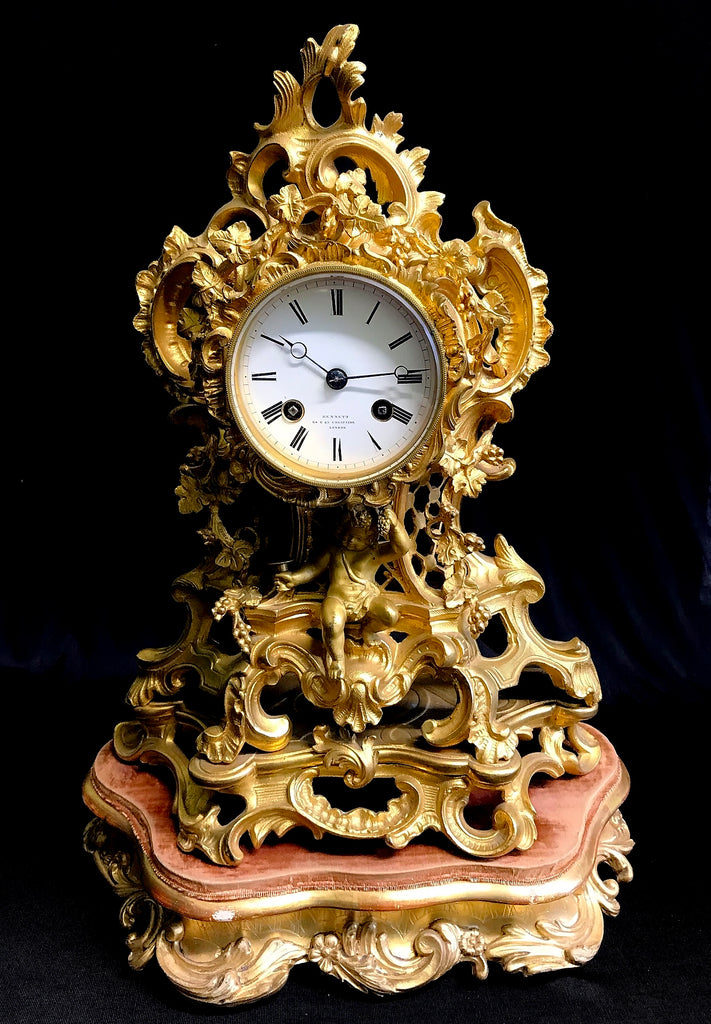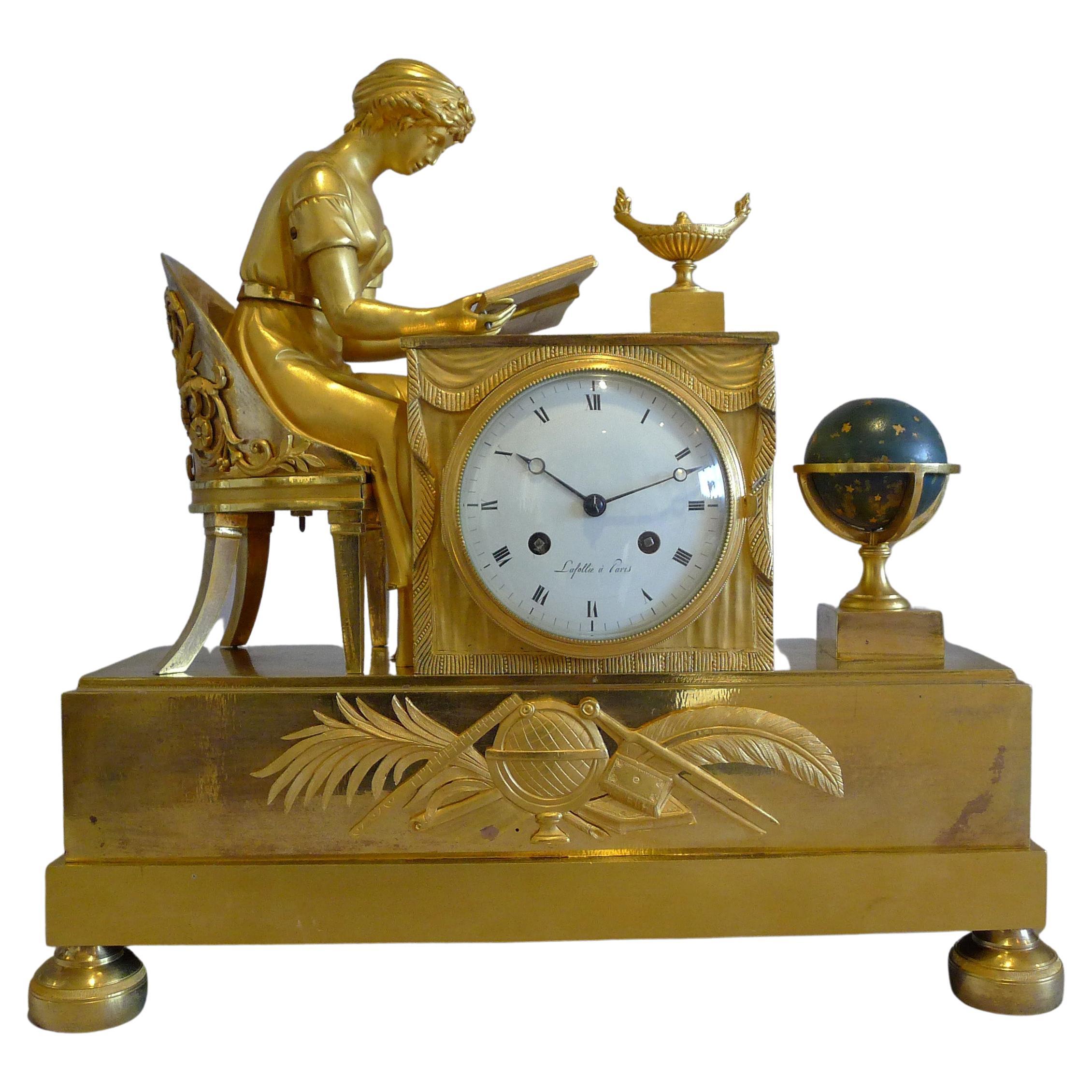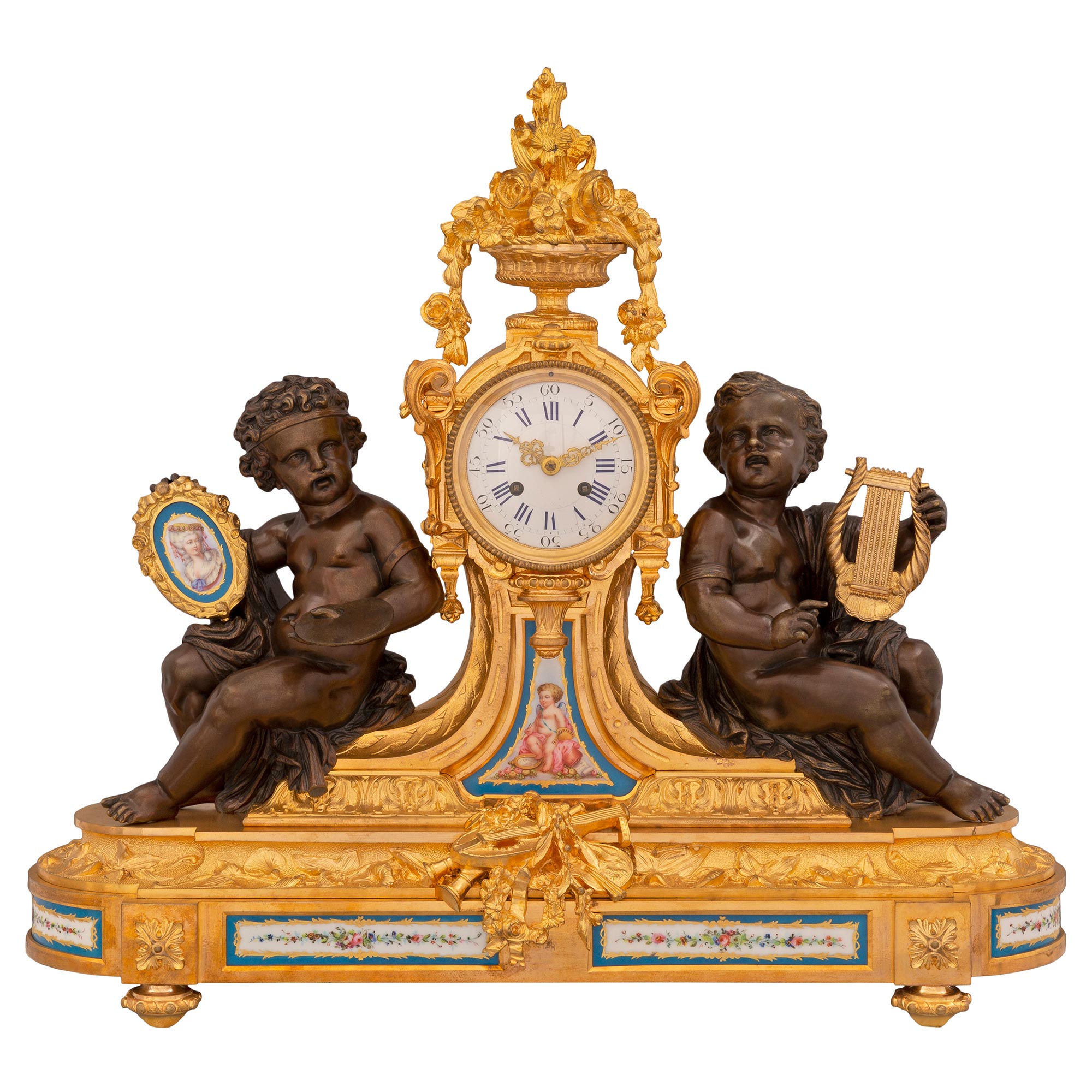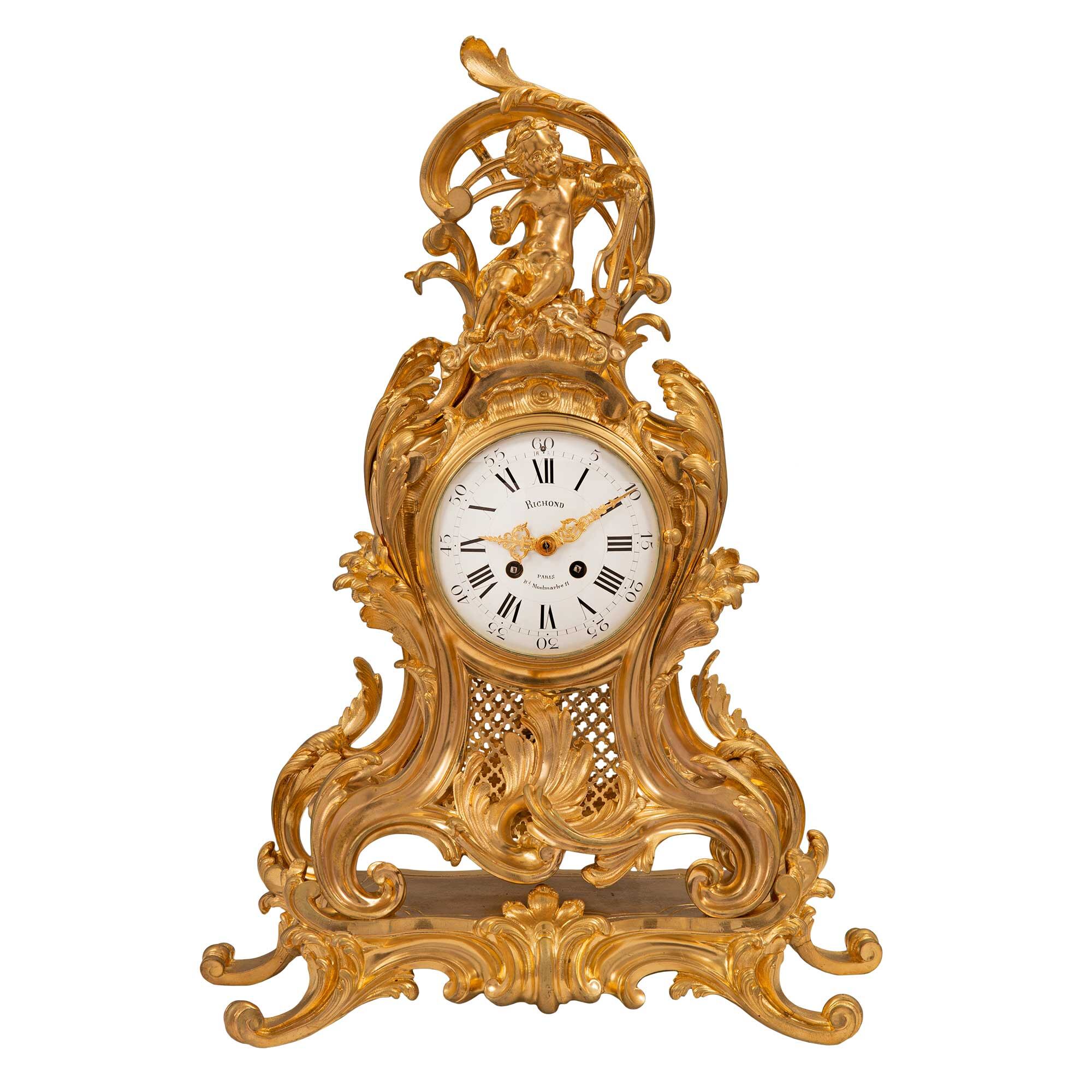Ormolu is a type of gilded brass or bronze that was popular in the 18th and 19th centuries for decorating furniture, clocks, and other decorative objects. The term "ormolu" comes from the French "or moulu," which means "ground gold." Ormolu was created by applying a thin layer of gold leaf to a brass or bronze base and then carefully polishing the surface to give it a bright, shiny finish.
Ormolu clocks were particularly popular in the 18th and 19th centuries, when ornate, decorative objects were in vogue. These clocks were typically made by skilled craftsmen and were often intricately decorated with a variety of motifs, including flowers, leaves, and scrolls. Ormolu clocks were often made in a variety of styles, including Rococo, Neoclassical, and Gothic, to suit the tastes of different collectors.
Ormolu clocks were typically made in two main forms: mantel clocks and wall clocks. Mantel clocks were small, decorative clocks that were placed on a mantelpiece or other flat surface, while wall clocks were larger clocks that were mounted on a wall. Both types of ormolu clocks were often highly ornate and were designed to be showpieces as much as they were designed to tell time.
Ormolu clocks were prized for their beauty and craftsmanship, and were often given as gifts or passed down through the generations as heirlooms. They were also popular with collectors, who prized the intricate designs and attention to detail that went into their creation. Many ormolu clocks are now considered works of art, and are highly sought after by collectors and antique enthusiasts.
Despite the popularity of ormolu clocks in the 18th and 19th centuries, they are now relatively rare, as the process of creating ormolu is time-consuming and labor-intensive. However, a number of modern clockmakers still produce ormolu clocks, using traditional techniques and materials to create beautifully crafted timepieces that are true to the spirit of the original ormolu clocks.
In conclusion, ormolu clocks are highly decorative timepieces that were popular in the 18th and 19th centuries. These clocks were typically made in two main forms: mantel clocks and wall clocks, and were prized for their beauty and craftsmanship. Although they are now relatively rare, ormolu clocks are still highly sought after by collectors and antique enthusiasts, and a number of modern clockmakers continue to produce ormolu clocks using traditional techniques.







